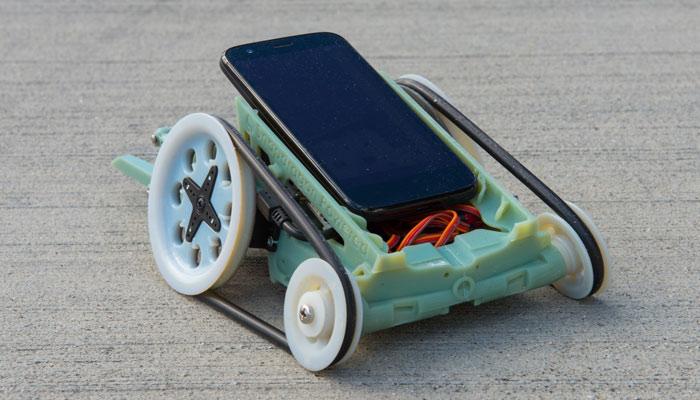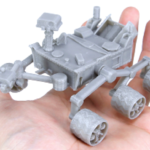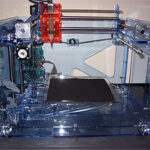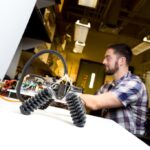

In 1985, seven friends sat down together to talk about ways in which they could create quality communication systems. Since then, the company they formed has opened offices in more than 40 countries and continues to strive to creatively contribute to communications technology. One of those inventions is the Snapdragon processor that is in over 1,350 different models of smartphones and tablets and has found its way into cars, home entertainment systems, embedded computing, and wearable technology.
The latest place that it has made its appearance is in the Snapdragon Micro Rover, an adorable little roving robot powered by a smartphone with a Snapdragon processor. The miniature vehicle can be modified by anyone as Qualcomm has made the 3D file for printing available for free download. This type of design crowdsourcing is becoming increasingly common as companies look to harness the passion and intelligence of a vast number of people to advance their ideas. It is, of course, also a lot cheaper than hiring all of the minds that will most likely contribute.
The back of the motorized unit has a forklift in case you need to move some very small cargo or possibly poke a sleeping cat. In addition, to using the Navigation Android App that lets you use a basic dual joystick technology to move the rover around, they have created the ‘Follow Target’ app that enables the diminutive buggy to follow a target. This autonomous control falls a bit short of the type of self-maintaining functionality that a fully autonomous robot might one day possess, but frankly, that’s probably not what people are really looking for in the Micro Rover.

The wheeled creation uses an IOIO (pronounced: yo-yo) board produced by a company called Sparkfun. This technology allows the apps on the smartphone that is controlling the vehicle to connect to the peripherals through a control code written in the same manner as any Java app. The power to the vehicle itself is provided in a surprisingly low tech manner (I have to admit that I was hoping for something more Skynet), through five AA batteries.
With this creation, Qualcomm is taking the remote controlled car to a new level of cute. I can imagine a whole series of races, lifting, and obstacle events springing to life around the 3D printed rovers. It will be interesting to follow this project to see what other creative designs come about from this initial release.
Let’s hear your thoughts on this 3D printable smartphone controlled robot. Have you printed one out? Discuss in the Qualcomm 3D printed robot forum thread on 3DPB.com.
I guess, now we just sit back and hope it doesn’t become sentient…
When it comes to 3D real estate visualization in the USA, our service provides the perfect solution for bringing property listings to life. Through our platform, you can easily access cutting-edge 3D renderings that showcase your real estate projects in a way that attracts potential buyers and investors. Whether it's residential, commercial, or mixed-use properties, our team of experts uses advanced technology to create immersive visualizations that highlight the best features of your property, making it easier for clients to imagine the space as their own.
Through our website, you can quickly get high-quality 3D real estate visualizations that are tailored to your specific needs. With our help, you'll stand out in the competitive real estate market by offering potential buyers a realistic, interactive view of your property. Our efficient process ensures a fast turnaround time, while our attention to detail guarantees that every aspect of the property is represented accurately, giving you a powerful marketing tool to promote your real estate listings.






